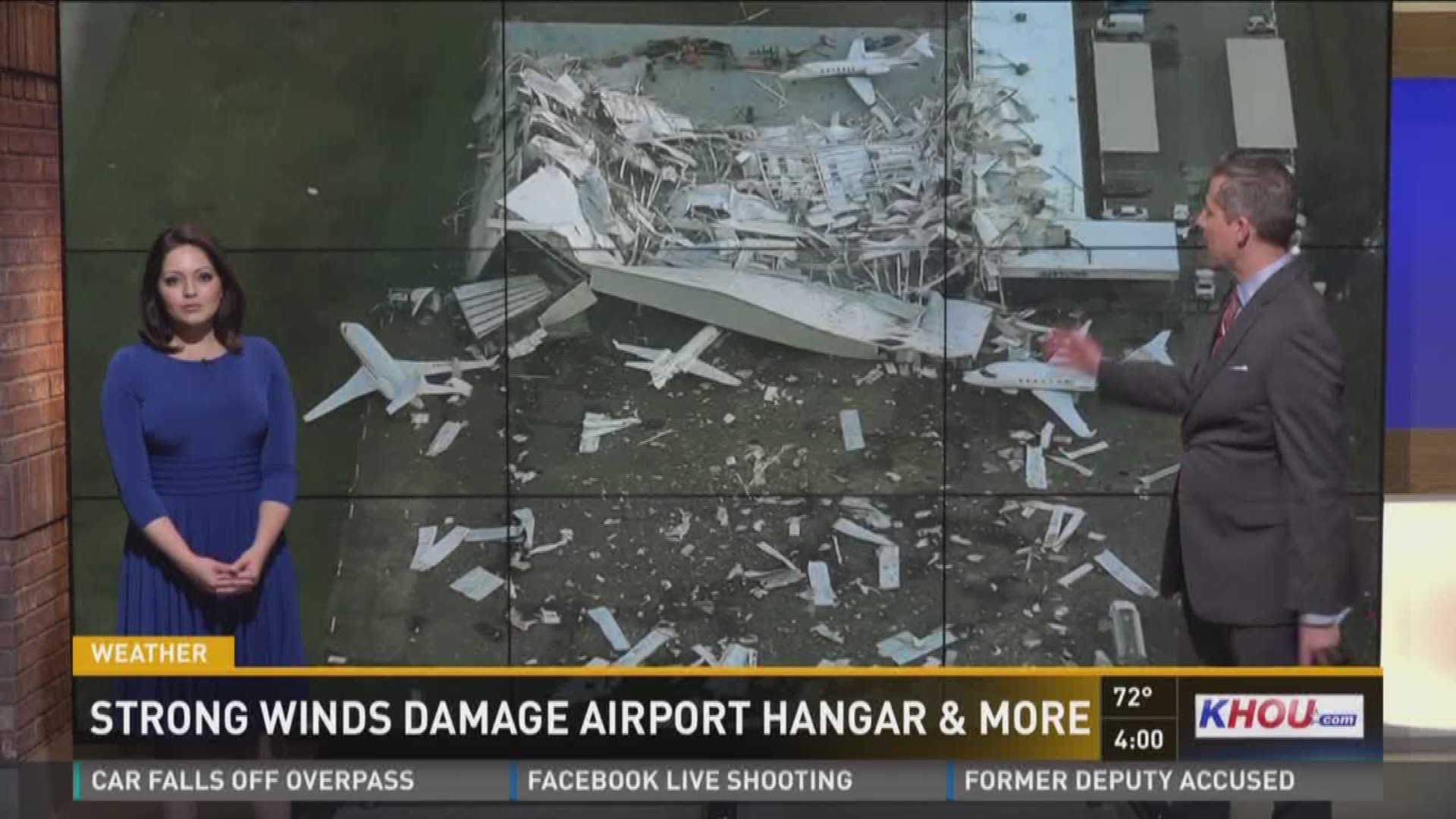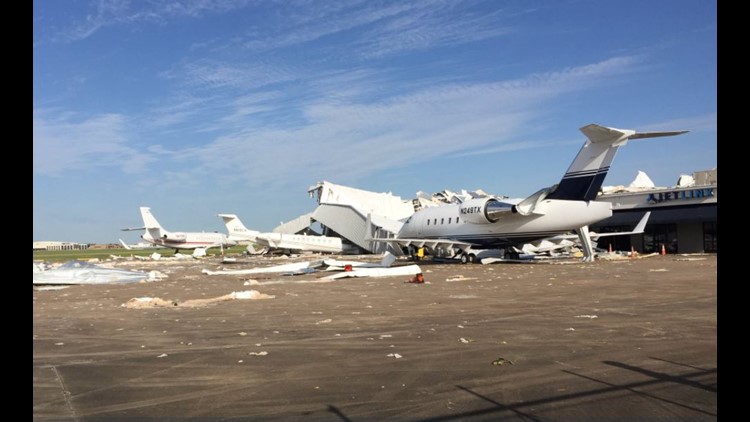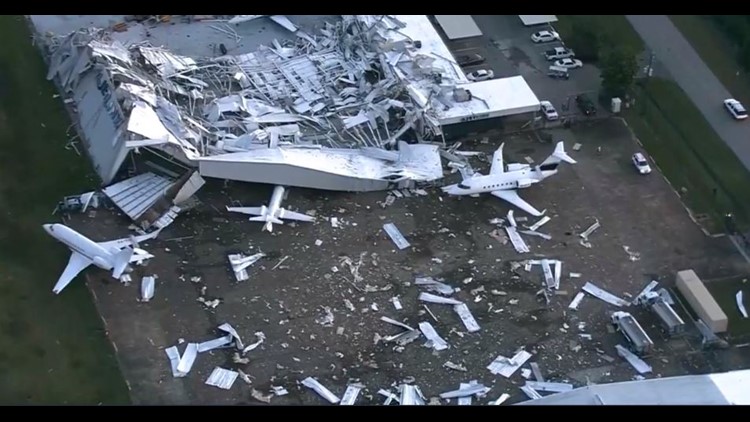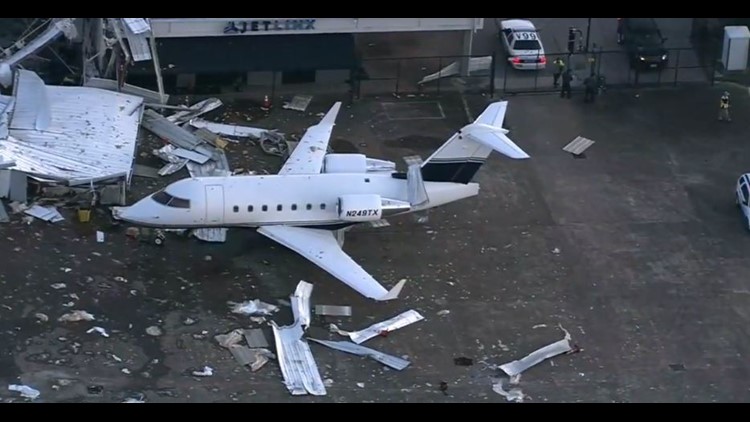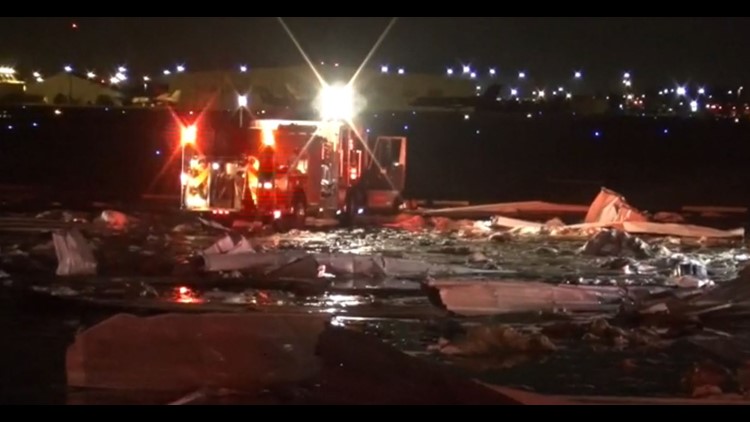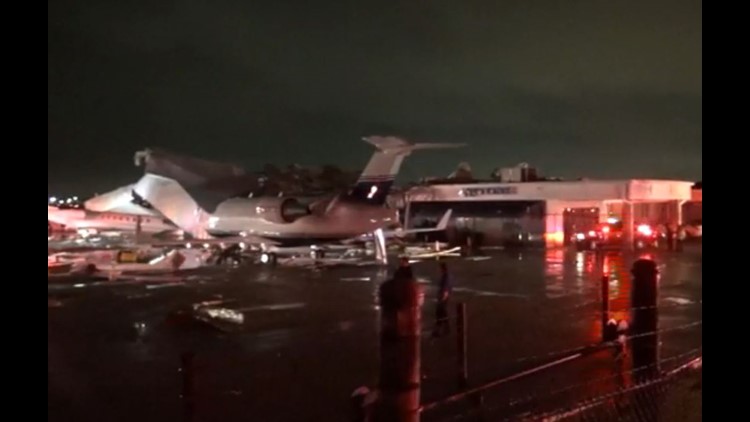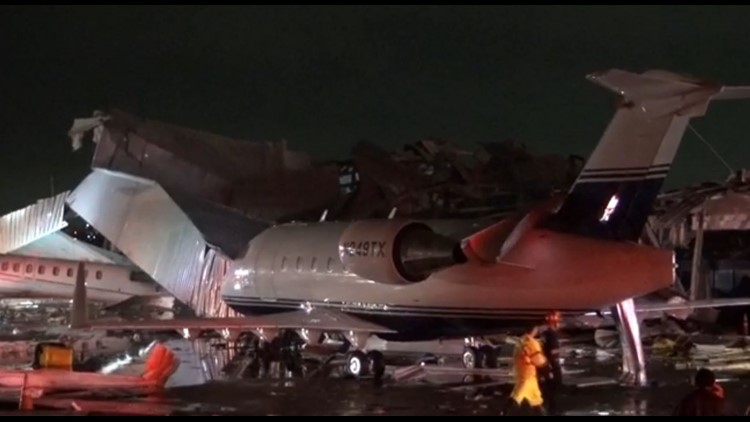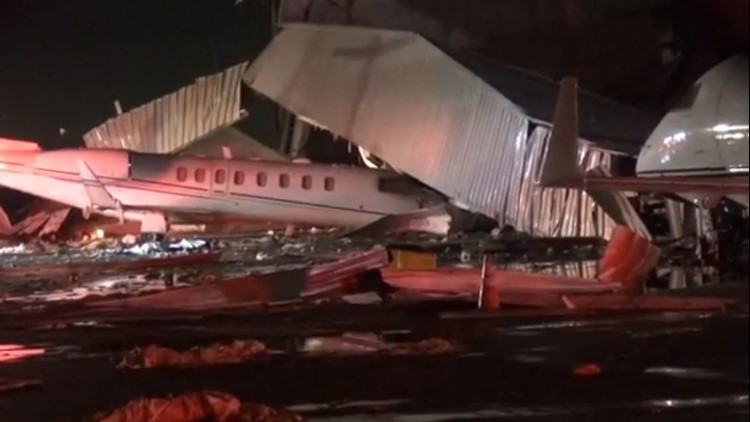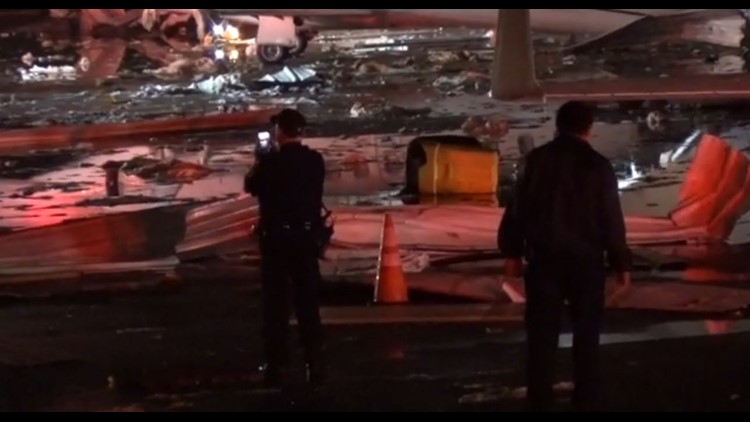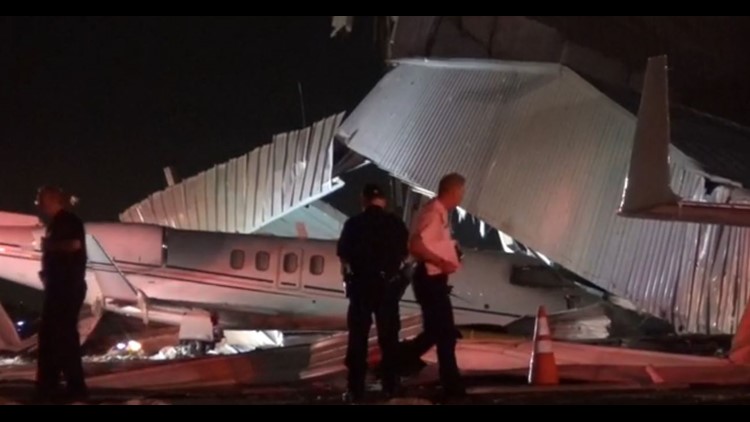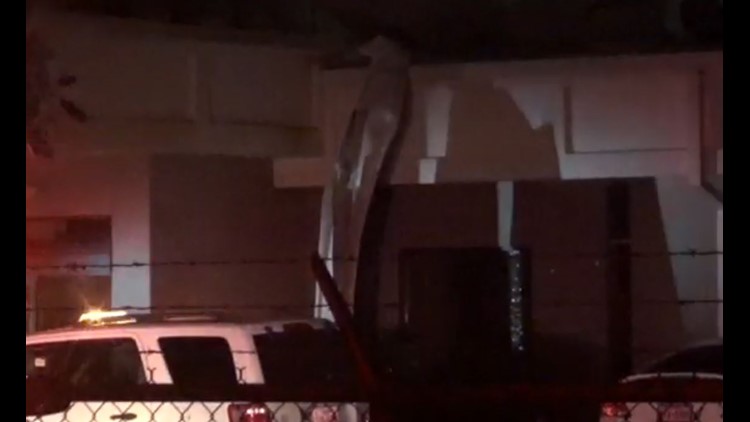HOUSTON – Houston firefighters responded to a building collapse at Hobby Airport overnight as strong storms pushed through the area.
Photos: Hangar collapses during storm at Hobby Airport
No one was inside at the time, and there were no injuries, but that almost wasn't the case.
KHOU 11 Reporter Michelle Choi says, according to the National Weather Service, 20 minutes before the microburst hit with winds upwards of 80 mph, crews were still working inside the hangar.
The collapse occurred around midnight Tuesday along W Monroe Road and Freeland.
The building that collapsed is a private terminal building at the Jet Linx facility at Hobby. It appears several airplanes were damaged when the storm hit.
Debris made its way to two nearby runways, but airport officials say there were no flight delays.
The runway reopened Wednesday afternoon.
The National Weather Services identifies a microburst as:
A microburst is a localized column of sinking air (downdraft) within a thunderstorm and is usually less than or equal to 2.5 miles in diameter. Microbursts can cause extensive damage at the surface, and in some instances, can be life-threatening. There are two primary types of microbursts: 1) wet microbursts and 2) dry microbursts. Wet microbursts are accompanied by significant precipitation and are common in the Southeast during the summer months.
What causes a Microburst?
It all starts with the development of a thunderstorm and the water droplets/hailstones being suspended within the updraft. Sometimes an updraft is so strong it suspends large amounts of these droplets and hailstones in the upper portions of the thunderstorm. There are many factors that can lead to evaporational cooling (sinking air) and therefore weakening of the updraft. Once this occurs, it is no longer capable of holding the large core of rain/hail up in the thunderstorm. As a result, the core plummets to the ground. As it hits the ground it spreads out in all directions. The location in which the microburst first hits the ground experiences the highest winds and greatest damage.
Microburst Damage
Wind speeds in microbursts can reach up to 100 mph, or even higher, which is equivalent to an EF-1 tornado! Winds this high can cause major damage to homes and other structures and level hundreds of trees. It is very important that you take Severe Thunderstorm Warnings just as seriously as Tornado Warnings!

